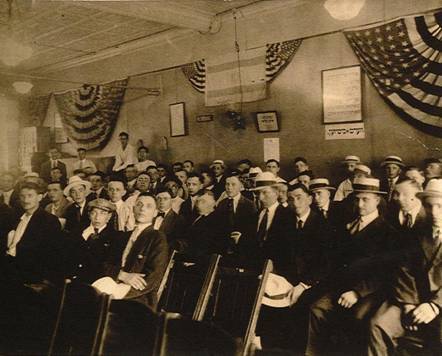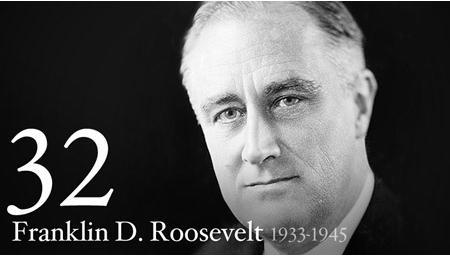By Moriah Amit, Senior
Reference Services Librarian, Genealogy Coordinator
Although the notion that our immigrant ancestors’ names were changed by clerks at Ellis Island has been debunked time and again by noted scholars in Jewish genealogy (see References below), this myth remains pervasive in the stories that American Jews tell about their family history. The truth, that most of our immigrant ancestors chose to Americanize their names after they settled in the U.S., facing the same pressures to assimilate and avoid discrimination as other immigrant groups, may not be as compelling or as palatable to our modern sensibilities.
However, grappling with this reality can help us tackle one of the most common and daunting obstacles in Jewish genealogical research: finding our immigrant ancestors’ original names. Without knowledge of their original names, it is difficult to locate relevant passenger arrival manifests and nearly impossible to trace our family history further back in the “old country.” Through this post, I hope to impart a few strategies that I have utilized effectively for breaking through this “brick wall” using primary sources and name change patterns.

“Applicants for U.S. Citizenship in the HIAS Waiting Room” Alter Kaczyne Collection (RG 1270), Courtesy of the YIVO Institute for Jewish Research
Names on Ship Passenger Manifests
Jews living in Eastern Europe typically went by multiple given names, including a shem ha-kodesh, or Hebrew religious name (for men only), a kinnui , or secular Yiddish name, and any number of nicknames in Yiddish and/or the local vernacular language. Additionally, some went by a double name, essentially a first and middle name; the two parts could be related in sound, meaning, or Biblical symbolism, like Aryeh Leib (meaning “lion” first in Hebrew, then in Yiddish), or be completely unrelated, like Sura Rivka. The given name used on your ancestor’s passenger manifest will be either their secular Yiddish name or a diminutive version of that name. For individuals with double names, the manifest may list only the first name, only the second name, or both in either order. Although your immigrant ancestors’ given names and surnames would have been originally written in the Cyrillic or Hebrew alphabets, on the manifests, they were written down the way that they sounded in the Latin alphabet, according to the phonetic rules of the language of the agent from whom their steamship ticket was purchased (typically, English, German, Dutch, or French). Thus, certain consonants and consonant clusters were frequently used interchangeably (e.g. V and W, or CH and KH) and vowels were particularly interchangeable in various transliteration systems.
Finding Original Names in Primary Sources
While most Eastern European Jewish immigrants did not apply for a legal change of name, there are two key places in which they (or their next-of-kin) may have recorded their pre-Americanized name. The most reliable source of an immigrant’s given name is his/her tombstone, upon which you will often find the deceased’s Hebrew name inscribed, in accordance with Jewish tradition. For men, you will need to use the Hebrew name on the tombstone to infer their likely Yiddish name, again typically related to one another in sound, meaning, or Biblical symbolism. For women, the Hebrew and Yiddish names are the same. For more information on how to locate a tombstone, see our cemetery research guide.
Another potential source of an immigrant’s pre-Americanized name (in this case, the secular Yiddish given name and European surname) is his/her naturalization petition, the second and final form required in the citizenship application process. It is important to keep in mind that many immigrants never became U.S. citizens and that, prior to 1922, a woman’s citizenship status was derived from either her husband or father and, therefore, she would not have filed a naturalization petition herself. For more information on how to locate a naturalization petition, see our naturalization research guide.
Inferring Original Names from Common Name Change Patterns
If the above sources are unavailable or unhelpful, you may try to infer an ancestor’s Yiddish name based on the English name they adopted in the U.S.; however, it is important to remember that there are no fixed English equivalents for Yiddish names. Most immigrants changed their given name to one that shared only the same initial letter or sound. Most Biblical names have versions in every European language, including English. If the English equivalent name was trendy at that time, then that name was the one most often adopted by an immigrant. For example, in Warren Blatt’s study of over 6,000 tombstones in several early 20th-century landsmanshaft cemeteries in New York and Boston, 94% of those buried with the English name Abe or Abraham were born with the Hebrew equivalent Avraham. In contrast, only 4% of those named Moshe took on the unfashionable English equivalent, Moses. For most post-Biblical Jewish names, such as Fruma, there is no English equivalent; likewise, for immigrants who adopted English names with non-Jewish roots, there is no Hebrew or Yiddish equivalent. In the aforementioned tombstone study, those who were buried with the name Bertha (of German origin) were almost equally likely to have been born as Breina (26%), Beila (26%), or Bracha (17%). In a small number of cases, the immigrant chose a new given name that had nothing to do with their Hebrew or Yiddish names (Blatt, “Jewish Given Names”).
With surnames, many immigrants made minor spelling changes to conform to American pronunciation (e.g. Lewinowicz became Levinowitz) or simply shortened the name to make it easier for Americans to pronounce (e.g. Lewinowicz became Lewin). However, as with given names, there were some who adopted a new surname that had no resemblance to their original surname (e.g. Lewinowicz became Miller). Jewish given name and surname dictionaries and databases may assist you in creating a list of common Yiddish versions of your ancestors’ English names. For a comprehensive list of these resources, see our Jewish names research guide.
Still Stuck? We Can Help!
At the Ackman & Ziff Family Genealogy Institute, we have extensive experience assisting researchers in locating their ancestors’ original names. Feel free to visit us in person or on our website, genealogy.cjh.org, if you have questions about this process.
References:
Beider, Alexander. A Dictionary of Ashkenazic Given Names: Their Origins, Structure, Pronunciation, and Migrations. Bergenfield, NJ: Avotaynu, 2001.
Blatt, Warren.”Given Names.” Avotaynu Guide to Jewish Genealogy. Eds. Sallyann Amdur Sack and Gary Mokotoff. Bergenfield, NJ: Avotaynu, 2004, p. 35-42.
—. “Jewish Given Names.” 18th Seminar on Jewish Genealogy, July 1998, Los Angeles. Slides accessed at http://www.jewishgen.org/InfoFiles/GivenNames. Accessed 5 July 2017.
Kurzweil, Arthur. From Generation to Generation: How to Trace Your Jewish Genealogy and Family History. Updated edition with online resources. San Francisco, CA: Jossey-Bass, 2011.
Mokotoff, Gary. Getting Started in Jewish Genealogy. 2016-2017 edition. New Haven, CT: Avotaynu, 2016.
Sack-Pikus, Sallyann. “Just How Were Passenger Manifests Created?” Avotaynu Online, 1 Apr. 2009, http://www.avotaynuonline.com/2009/04/just-how-were-passenger-manifests-created-by-sallyann-amdur-sack-pikus-editor. Accessed 5 July 2017.
Sutton, Phillip. “Why Your Family Name Was Not Changed at Ellis Island (and One That Was).” New York Public Library, 2 July 2013, https://www.nypl.org/blog/2013/07/02/name-changes-ellis-island. Accessed 5 July 2017.
Trauring, Philip. “Name Changes at Ellis Island.” Blood and Frogs, 10 May 2011, https://bloodandfrogs.com/2011/05/name-changes-at-ellis-island.html. Accessed 5 July 2017.
—. “Variations in Jewish Given Names.” Blood and Frogs, 16 June 2011, https://bloodandfrogs.com/2011/06/variations-in-jewish-given-names.html. Accessed 5 July 2017.

